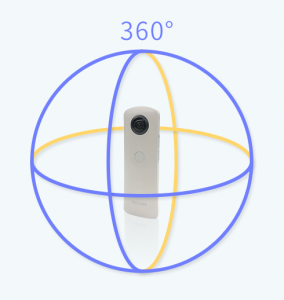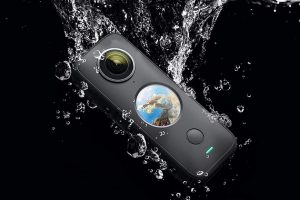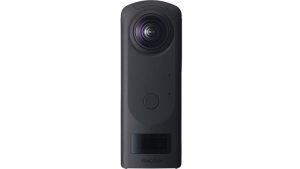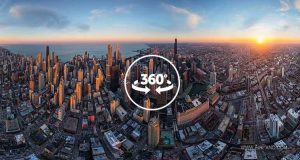The 360 Virtual Tour Camera, A Summary.
360 Virtual Tour Camera Introduction.
360 virtual tour cameras are quickly becoming one of the hottest Tech items to own in 2022. In the aftermath of the covid-19 pandemic everything in the world either shut down and died or went virtual and thrived. These powerful and impacting pieces of Technology have only recently started being offered under $1,000, making bees 360 virtual tour cameras more accessible to the common consumer. However, 360 virtual tour cameras have been used by both professionals and hobbyists for several years. we’re going to be talking about several aspects of 360 virtual tour cameras. First we’re going to go into a literal definition of what 360 virtual tour cameras are. Second, we will be talking about dedicated 360 virtual tour cameras, and what’s available in the marketplace today. will also be talking about DSLR cameras and their ability to produce 360 panoramic images, as well as methods and strategies to improve on that process. won’t be taking a quick look at a panoramic image and what that is. Lastly we will be talking about the post-production workflow for 360 virtual tour images, as well as methods of final display for your new camera product.
360 Virtual Tour Camera definition.
The Oxford English Dictionary defines panoramic as, ‘with a wide view surrounding the Observer; sweeping”. Many different cameras have an ability to take panoramic images. Most cell phones have an ability to take a panoramic image slowly dragging your camera Over the Horizon to create an elongated photograph displaying a sweeping and often stunning View of whatever you happen to be looking at. Recently with cell phone applications such as the Google street app, people are able to take 360 virtual tour images with their cell phone. Automatically stitched, the quality is notably lower than other cameras who are dedicated to 360 virtual tour images, or high-quality DSLR cameras using independent and dedicated photo stitching software. Some 360 Virtual Tour Cameras have dual 180 degree photo lenses on the front and back, like the Ricoh Theta Z1. Other cameras use a rotation based motion to capture a 360 degree image, like a Matterport Pro2, similar to a cell phone. Even drones are 360 virtual tour cameras. Given their ability to fly high and capture unique Angles, along with their high precision makes them ideal 360 virtual tour cameras. We will include cameras that fill in the blanks of their own blind spots due to their respective mechanical limitations (Pro2, Drones, some cell phone applications like Cloudpano Capture App).
360 Virtual Tour Camera Options.
There are many 360 virtual tour camera options that have hit the market- and not all are created equal. However, there are some strong brands who have put out an array of cameras to fit the budget of most photographers, from aspiring to professional. A good first glance is at the Insta360 One X2. This camera boasts some powerful features. 5.7k 360 image capture, a 30 feet waterproof rating, AI internal editing, voice control, steadicam features- and many more. Sounds impressive, right? Well, for a 360 virtual tour camera, this is certainly on the lower end. Yeah, voice activation and being able to make virtual tours at 30 feet are neat. But a deeper look reveals why this camera is not for commercial use. First, the glaring fact that the aperture is fixed to a 2.0, any fixed aperture is less than ideal to say the least. Second, with an image sensor size of only 1/2.3 inch. This is very small, and alludes to the reality that the 5.4k video is upscaled, and likely not the best image quality either. Combine with hyper exposed glass lens, and a missing GPS unit, and the Insta360 One X2 is likely best saved for your next vacation, and not much more. I wouldn’t be completely turned off by Insta360 however. At exactly ten times the price, a humble $4,700, Insta360 offers the Insta360 Pro II (not to be confused with the Matterport Pro2, another 360 virtual tour camera with notably less features). THe Pro II is an attractive benchmark for “what is a good 360 virtual tour camera”. Able to stream in 4K while also capturing 8K video on six massive 200 degree lenses. Built in GPS, native VR Adobe extension, live previews, stabilization; this thing is a beast. And it objectively looks cool, like a miniature money printing machine that looks like a globe. Like the Matterport Pro2, the Insta360 Pro II is compatible with the Matterport ecosystem.
Do you need a $4,700 camera to make great virtual tours? Absolutely not. Does it make things a lot easier while delivering higher quality deliverables while hosting some serious flexibility- you bet.
Another popular manufacturer in the 360 virtual tour camera industry is Ricoh Theta. The Ricoh Theta SC2 comes in at a modest $296.95 on Amazon, putting it within striking distance of an impulse buy. With a 12 megapixel resolution shooting 4K video, it seems like an easy option for getting into the 360 virtual tour industry. However, like the Insta360 One X2, it’s largely best for personal use. But for that personal use it comes in four fun colors; white, pink, yellow, and blue. Ricoh Theta is best known in the virtual tour industry for its flagship model, the Ricoh Theta Z1. A beefy $1,049.00 on Amazon, the Ricoh Theta Z1 can do it all. A glorious 1” imaging sensor, 52 GB of internal storage, 4K video shooting and streaming (but not both at the same time), an entire catalog of third party plugins, and a very robust user base- this is the jumping in point for photographers looking to take their 360 virtual tour business seriously; while not spending $4,700. Four-way audio with internal stabilization make the Z1 ideal for creating content for VR platforms. The Z1 is also compatible with Matterport, so investing in a Z1 can put you in the sweet spot of functionality and not requiring a second mortgage. 
360 Virtual Tour Cameras and Matterport.
It’s hard to write about the 360 virtual tour camera market and not talk about the big black and red elephant in the room. Matterport is the face of virtual tours to those who aren’t in the industry. Certainly not the first, but absolutely the most prominent, Matterport certainly has its own upsides. The Matterport camera line is thinner than most, the flagship model being the Matterport Pro 2 (again, not to be confused with insta360 Pro II). Notably different from other models with LIDAR built in, as well as it’s style of capture. Placed on a tripod, the Pro2 spins in a 360 circle, measuring the room around it and automatically building a 3D model. Unlike most 360 virtual tour cameras, the Pro2 takes over 30 seconds to capture a single panoramic. Also, the pro2 can’t see directly above or below it, making it less than a true 360 camera. Combined with other shortcomings like no video, no internal storage, no GPS, no removable battery, no camera settings adjustments like ISO or aperture. It can be hard for a lot of people to justify buying a slower, lower quality camera that only works in the matterport ecosystem. Matterport itself has lost it’s way over the years. Following their lackluster IPO, Matterport decided to cannibalize its own user base by undercutting the market, and offering these jobs to whoever was willing to accept the undercut price, of course only after Matterport gets their cut. Combined with insanely high hosting fees and a dwindling user base, it’s clear matterport is a sinking ship.
It’s important to note that there are cameras that are not dedicated 360 virtual tour cameras, but are able to put out stunning images. Starting with drones, this is likely the least intuitive regarding 360 virtual tour cameras. When considering their high precision, built in GPS and AI, as well as a host of other stabilization sensors; most drones will rotate in a single point in the air, capturing images as they rotate. This produces a stunning aerial panoramic that can turn a $500 virtual tour into a $1,000 virtual tour with a single pano. Some drones, like the common DJI brand, even have built in panoramic functions- meaning you can capture these images with a single button. They also have built in AI stitching software that can at times do a notably amazing job. But most commercial applications will require a degree of post production, but often not much. Traditional DSLR cameras are also able to capture 360 panoramic images, however the process is much more involved. With no AI and no automation, the photographer must use special tripod heads that remove the stitching errors that can be common with shooting with this style of camera.

Ultimately, the products of your 360 virtual tour camera can be hosted on a variety of platforms. From the loathsome Matterport, to more nimble platforms like 3DVista. Most users will find great success with companies like cloudpano. It’s also worth noting that Facebook and Youtube can host 360 content, although not much of a tour. An important aspect of 360 virtual tours is how the consumer will use them. This can be more finely adjusted in the layout and construction of the tour itself, while maintaining the various strengths of the individual platform. It’s with noting some offer more customization than others.
A Conclusion on 350 virtual tour camera offerings.
In conclusion, a dedicated 360 virtual tour camera is a new and budding tool in the photographers kit. From cost effective models that cost around $300, to more advanced models approaching $5,000- there is massive variability and options in the vertical. All cameras do basically the same thing; take pictures that allow the viewer to “look around”, and not be stuck with a 2D static view. This is obviously more engaging and more practical than other types and applications. As we move deeper into 2022 and beyond, the world will go increasingly virtual. A holdover of the COVID-19 pandemic, virtual applications will grow in scale and scope, and those who master content generation in this field are certain to be in a position to operate profitable business for years and years to come. While a 360 virtual tour camera is a serious investment, it’s important to remember that this is a fun and engaging industry, where passive income and unique opportunities are absolutely on the table. It’ll be up to forward thinking people coming up with ideas and methods to enable this technology in their own communities, to seriously advance the market and make this technology shine through in every way it was designed to, and more.

This article was originally published on momentumvirtualtours
